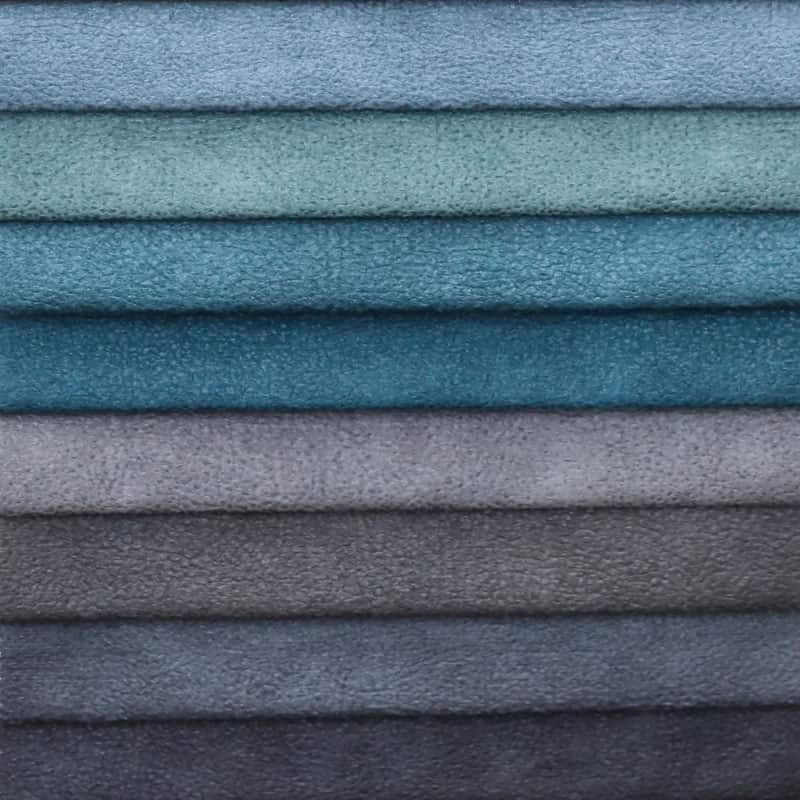

Recycled fiber has excellent hygroscopicity and comfort […]
Recycled fiber has excellent hygroscopicity and comfortable wearing. It is the most ideal and most potential textile raw material for the textile and apparel industry.
Overview of recycled fiber:
1.Tencel fiber
Tencel fiber is a mixture of wood pulp, water and amine oxide, mainly coniferous trees, heated to completely dissolve, and will not produce any derivatives or chemical effects during the dissolution process. It is directly spun after removing impurities, and its molecular structure is simple. Carbohydrates. Tencel fiber can be completely decomposed in the soil without pollution to the environment; in addition, the amine oxide solvent used in the production is completely harmless to the human body, almost completely recyclable, and can be used repeatedly. The cellulose molecules contained in the raw material pulp in the production Can not afford chemical changes, no by-products, no waste discharged outside the plant, is environmentally friendly or green fiber. The fiber fabric has good hygroscopicity, comfort, drape and stiffness, and good dyeability. In addition, it can be blended with cotton, wool, hemp, nitrile, polyester, etc., and can be ring spinning, air spinning, core spinning, Spin into various cotton and wool yarns, core-spun yarns, etc.
2. Modal fiber
Modal fiber is a brand new cellulose fiber. The raw material of Modal fiber comes from natural wood, which can be naturally degraded after use. Because this type of fiber uses natural cellulose as a raw material, it is biologically solvable, and does not produce serious environmental pollution problems similar to viscose county committee in the fiber production process. It is a new environmentally friendly fiber in the 21st century. Modal fiber is half the price of Tencel fiber and is a second-generation regenerated cellulose fiber. Modal fiber can be blended and interwoven with a variety of fibers to give play to the characteristics of each fiber and achieve a better consumption effect. Modal fiber fabric is better in moisture absorption and breathability than pure cotton fabric. It has a soft feel, good drape, comfortable wearing, bright color, and is a natural mercerized fabric.

3. Soy protein fiber
Soybean protein fiber uses soybean waste meal after oil extraction as raw material, uses bioengineering technology to purify globulin in soybean meal, and through the action of additives and biological enzymes, the purified globulin changes the spatial structure and then adds hydroxyl groups It can be made into protein spinning solution of certain concentration with high polymer such as amino group, and then spun by wet spinning process. Soybean meal is a by-product of the oil and fat workshop. It is very commanded by our country's resources. It is a comprehensive utilization of waste. The resources are inexhaustible and inexhaustible. Soybean protein fiber can be called "green fiber" in the new century. Because the outer layer of soybean protein fiber is basically protein, it has good affinity with human skin, and contains a variety of amino acids necessary for human body, which has good health care effects. Adding a certain amount of Chinese herbal medicine with sterilization and anti-inflammatory effect to the protein side chain by chemical bonds in the soybean protein fiber spinning process, the drug effect is significant and long-lasting, avoiding the functional products developed by the cotton product finishing method. Persistent shortcomings. Soybean protein fiber fabric is soft and smooth to the touch, has good moisture absorption and breathability, has silk-like luster, has better wrinkle resistance than silk, and has good dimensional stability.
4. Bamboo fiber
Bamboo fiber is a new type of regenerated cellulose fiber developed and industrialized by China after soybean protein fiber. Bamboo fiber is divided into bamboo fiber and bamboo fiber. Bamboo fiber is made from Phyllostachys pubescens, added with functional additives in bamboo pulp, and processed by wet spinning. Bamboo fibrils are fibers made by processing bamboo with natural biological agents. The bamboo pulp used as the raw material for spinning is derived from the fast-growing fresh bamboo and has abundant resources. Buried and incinerated waste will not cause environmental pollution, and it is an environmentally friendly fiber that meets the needs of green consumption. Bamboo fiber is similar in performance to viscose fiber. Bamboo fiber fabric has good moisture absorption and breathability, its drape and dyeing performance are also relatively good, has silk-like luster and feel, and has antibacterial, deodorant and ultraviolet protection functions.
5. Viscose-based chitin fiber
Chitin is widely present in the shells of arthropods such as shrimps, turtles and other aquatic products and insects, as well as in the cell walls of fungi and algae. Viscose-based chitin fiber is a fiber made of chitin, chitosan and cellulose by conventional wet spinning process. It has biological activity, biodegradability and biocompatibility, and has excellent moisture absorption and moisturizing functions. Chitosan fiber and cotton blended fabrics have a deodorizing function, which has broad development prospects in the development of health apparel applications.
Tencel fiber, Modal fiber, soybean protein fiber, bamboo fiber and viscose-based chitin fiber and viscose fiber, cotton, silk, wool and polyester fiber are respectively microscope, dissolution method, combustion method and coloring method.